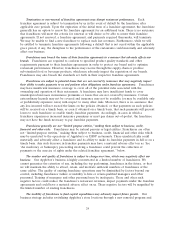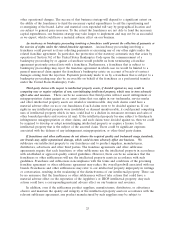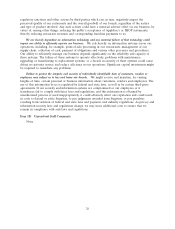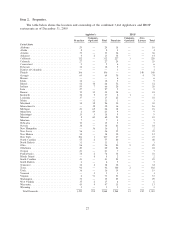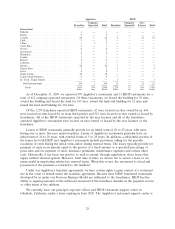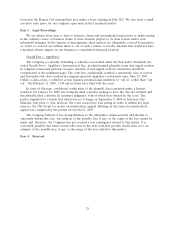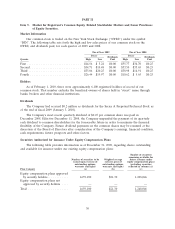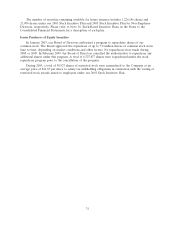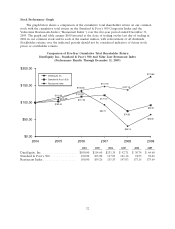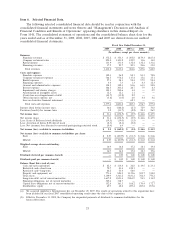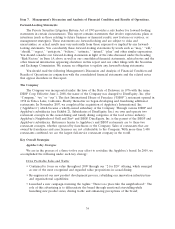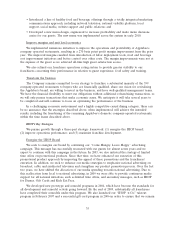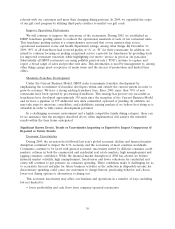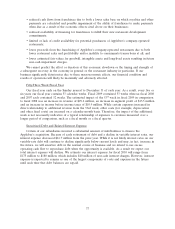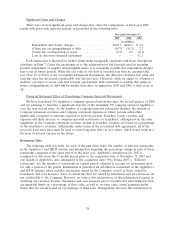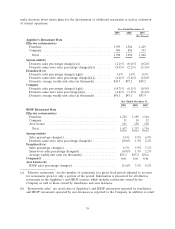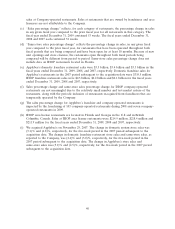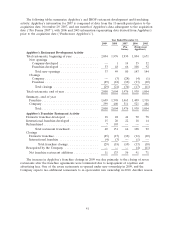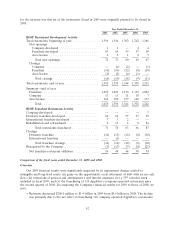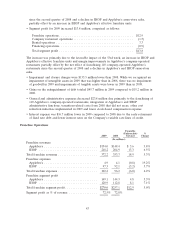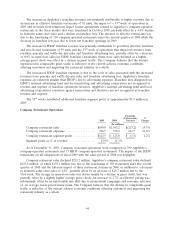IHOP 2009 Annual Report Download - page 53
Download and view the complete annual report
Please find page 53 of the 2009 IHOP annual report below. You can navigate through the pages in the report by either clicking on the pages listed below, or by using the keyword search tool below to find specific information within the annual report.
Item 7. Management’s Discussion and Analysis of Financial Condition and Results of Operations.
Forward-Looking Statements
The Private Securities Litigation Reform Act of 1995 provides a safe harbor for forward-looking
statements in certain circumstances. This report contains statements that involve expectations, plans or
intentions (such as those relating to future business or financial results, new features or services, or
management strategies). These statements are forward-looking and are subject to risks and
uncertainties, so actual results may vary materially from those expressed or implied by any forward-
looking statements. You can identify these forward-looking statements by words such as ‘‘may,’’ ‘‘will,’’
‘‘should,’’ ‘‘expect,’’ ‘‘anticipate,’’ ‘‘believe,’’ ‘‘estimate,’’ ‘‘intend,’’ ‘‘plan’’ and other similar expressions.
You should consider our forward-looking statements in light of the risks discussed under the heading
‘‘Risk Factors’’ in Item 1A above as well as our consolidated financial statements, related notes and the
other financial information appearing elsewhere in this report and our other filings with the Securities
and Exchange Commission. We assume no obligation to update any forward-looking statements.
You should read the following Management’s Discussion and Analysis of Financial Condition and
Results of Operations in conjunction with the consolidated financial statements and the related notes
that appear elsewhere in this report.
The Company
The Company was incorporated under the laws of the State of Delaware in 1976 with the name
IHOP Corp. Effective June 2, 2008, the name of the Company was changed to DineEquity, Inc. (the
‘‘Company,’’ ‘‘we’’ or ‘‘our’’). The first International House of Pancakes (‘‘IHOP’’) restaurant opened in
1958 in Toluca Lake, California. Shortly thereafter we began developing and franchising additional
restaurants. In November 2007, we completed the acquisition of Applebee’s International, Inc.
(‘‘Applebee’s’’) which became a wholly-owned subsidiary of the Company. Through various IHOP and
Applebee’s subsidiaries (see Exhibit 21, Subsidiaries of DineEquity, Inc.) we own and operate two
restaurant concepts in the casual dining and family dining categories of the food service industry:
Applebee’s Neighborhood Grill and Bar and IHOP. DineEquity, Inc. is the parent of the IHOP and
Applebee’s subsidiaries. References herein to Applebee’s and IHOP restaurants are to these two
restaurant concepts, whether operated by franchisees or the Company. Sales of restaurants that are
owned by franchisees and area licensees are not attributable to the Company. With more than 3,400
restaurants combined, we are the largest full-service restaurant company in the world.
Key Overall Strategies
Applebee’s Key Strategies
We are in the process of a three-to-five year effort to revitalize the Applebee’s brand. In 2009, we
accomplished the following under each key strategy:
Drive Profitable Sales and Traffic
• Continued to focus on value throughout 2009 through our ‘‘2 for $20’’ offering, which emerged
as one of the most recognized and regarded value propositions in casual dining;
• Re-engineered our new product development process, rebuilding our innovation infrastructure
and organizational capabilities;
• Launched a new campaign featuring the tagline ‘‘There’s no place like the neighborhood.’’ The
role of this advertising is to differentiate the brand through emotional storytelling while
launching new product news, driving traffic and enhancing perceptions of the brand;
34


